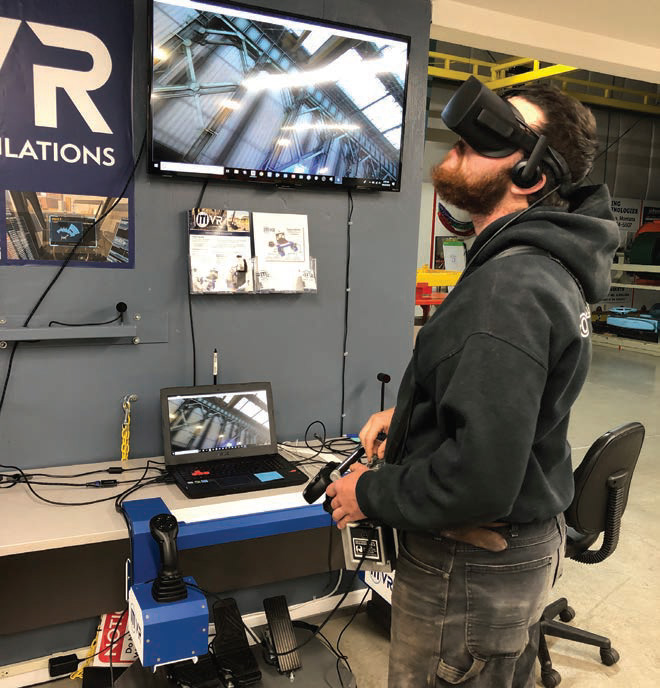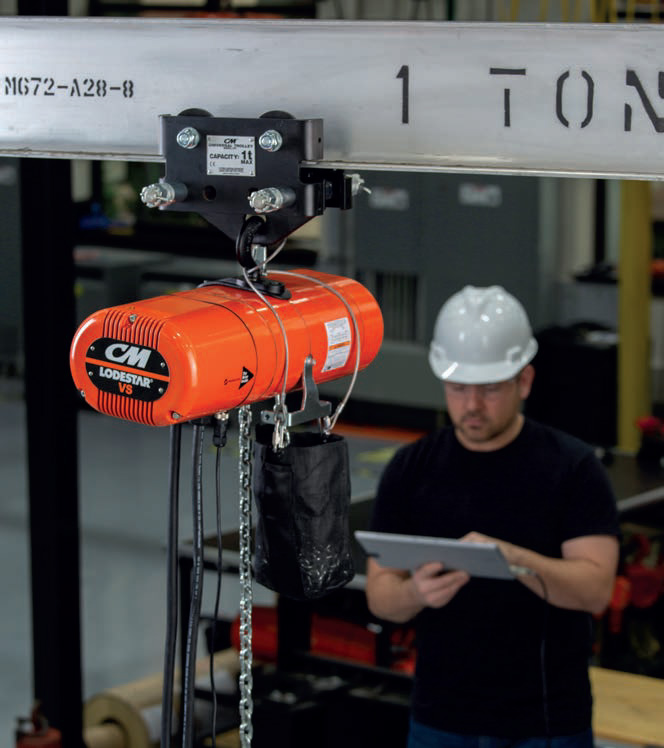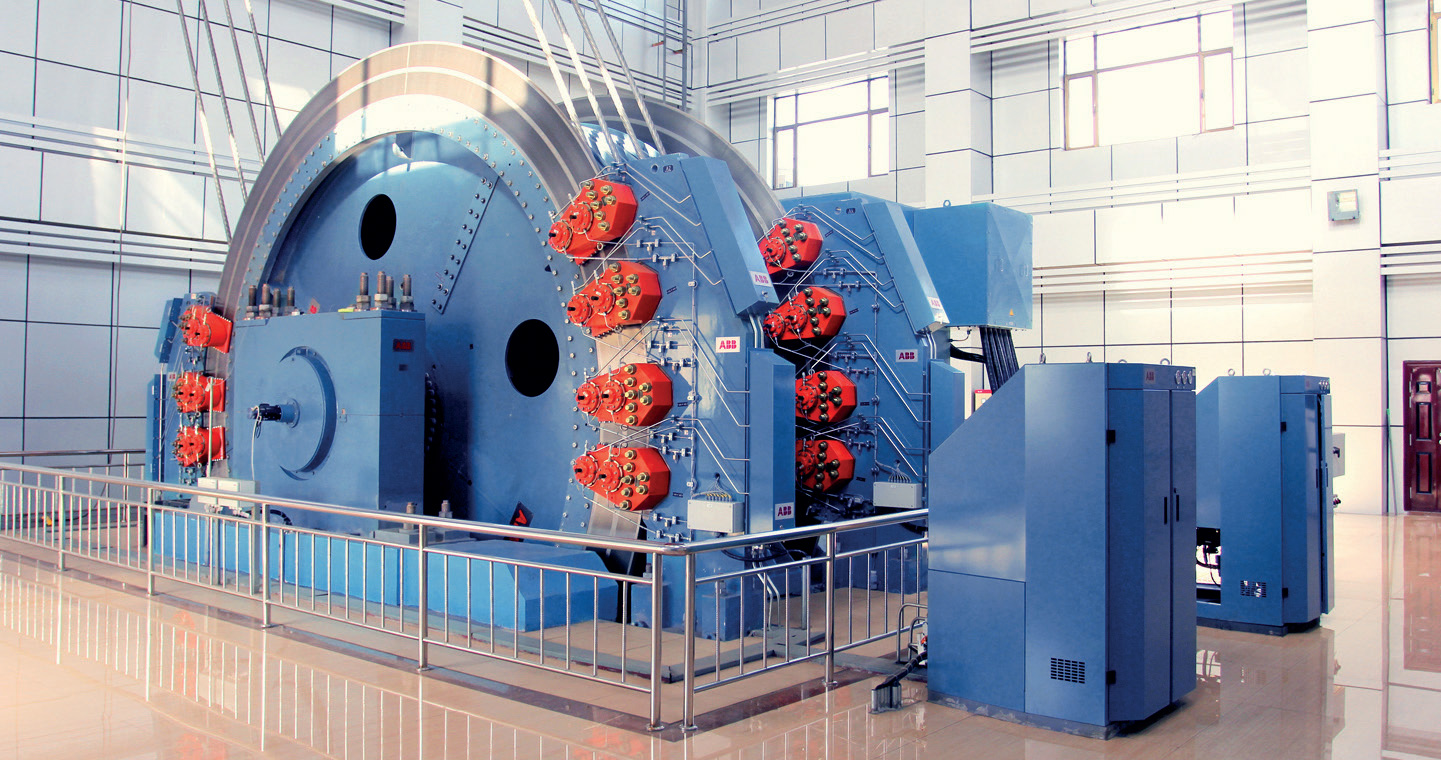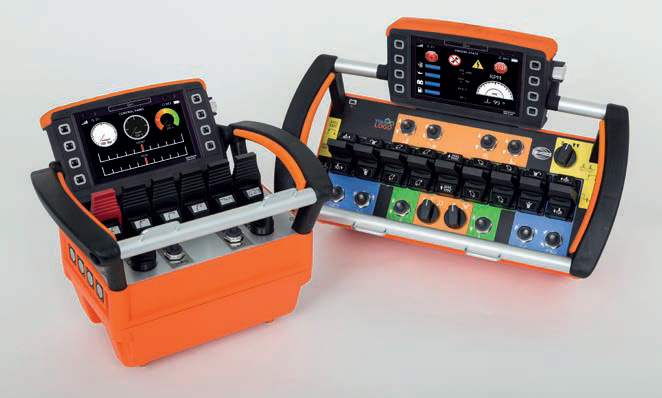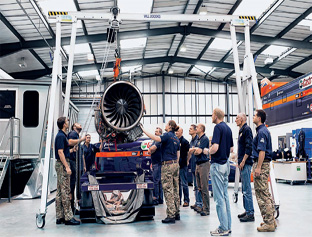Virtual Meet-up
24 November 2020The inaugural Overhead Crane and Hoist Innovation Conference, rganised by Hoist magazine, took place in early October. Daniel Searle reports
With almost all trade shows and conferences in our industry postponed for 2020 due to the Covid-19 pandemic, Hoist magazine worked with industry members to create a full conference agenda and virtual event, which took place on October 8th. It’s safe to say it was a success, with several hundred registrants logging in to network with sponsors and other delegates, and to watch the ten presentations that took place throughout the day. Each presentation was followed by a live question-and-answer session, allowing delegates to get further information from each speaker about the technologies on show.
The theme for the conference was innovation: the aim was to not only update lifting industry members with details of the very latest technologies available from manufacturers, but also to showcase the best and most cutting-edge equipment to end-users.
There was a large number of registrants from various well-known companies, keen to learn about how today’s—and tomorrow’s—lifting equipment can enhance the productivity and safety of their operations. Combined with a great line-up of speakers, the conference pushed the very best of our industry to the forefront to a swathe of key end-users.
INNOVATION ON SHOW
The conference kicked off with a presentation from Markus Otto, process cranes sales director at Demag, looking at both crane automation and a remote operating station system for cranes. The company has installed automated storage facilities with process cranes at manufacturers of paper rolls and metal coils, using a warehouse management system (WMS) to manage the materials being stored—including ensuring the products are stored correctly, and logging the position and type of each roll.
That allows the system to increase productivity dramatically, with the aim being high performance from the cranes and high-density storage in the warehouse. Yard management is also optimised: an example given from a case study showed average truck dwell time being reduced from 45 minutes to 17 minutes.
Key considerations included starting the installation process with planning and consultation, including virtual planning, to ensure the best results from the finished system—and choosing the right lifting attachment for the product. The grippers used in the paper roll manufacturing facility are able to handling more than one roll at a time, for example, and magnetic attachments can be used to handle steel.
The remote operating station (ROS), meanwhile, enables operators to control a crane without needing to be within direct line-of-sight of the crane. Real-time camera views, along with audio and processrelated information, provide the information required for the operator to work safely; there is also the option of operating multiple cranes from one position. The system is designed to make operator safer and more comfortable for the operator, as well as offering structural savings. It has already been used in industries including waste-to-energy, recycling/biomass, scrap handling, and more.
Versatility, portability and ease of use were all angles covered by Simon Luke, managing director at UK-based Reid Lifting, who discussed the company’s range of lightweight aluminium cranes and the range of uses the products have had in practical applications.
From a range of gantries, davits, sockets and accessories, covering a range of lifting capacities from 500kg to 5t, two of the company’s key products are the Porta- Davit Quantum—which weighs only 18kg, making it extremely portable, but can lift up to 600kg—and the Porta-Gantry Rapide, which offers rapid deployment.
The Porta-Gantry Rapide system requires no tools and only one or two people to assemble, and can lift goods or personnel, with a lift height up to 2.92m and an operating span of up to 3.5m. It’s designed to address a range of potential issues caused by manual handling, and is Atex-certified as well as being made from corrosion-resistant, marine-grade alloy aluminium.
Further versatility comes from Reid in the form of the Porta-Base five-piece counterbalance system, featuring a foldable basket loaded with 20kg hand weights. It’s suitable for lifting equipment processing goods up to 600kg, personnel with a working load limit of 300kg, and can also be used for fall arrest.
Oswald Deuchar, global product group manager for underground mining and hoisting at ABB, identified the key challenges facing lifting equipment in the mining sector.
Larger sizes of hoists are being demanded by end-users, due to deeper mines and lower-grade ores, which in turn require larger skips and larger mechanical equipment; there is increasing demand for turnkey projects; and digitalised systems are being requested to increase productivity. A lower environment impact, and compliance with safety legislation such as the SIL (safety integrity level) system, are also in demand.
For mining activities, ABB offers friction hoists, drum hoists, shaft equipment, electric drive and control systems, advanced digital services, and SIL 3-certified safety solutions. They are the first company to have certified SIL 3 products available, said Deuchar. As well as safety, reliability is key: as Deuchar highlighted in his presentation, the hoist is one of the most critical pieces of equipment at a mine. ABB’s Ability Performance Optimisation system helps to maintain smooth operation: it offers condition-based maintenance and predictive analysis, with a team of experts at ABB’s monitoring centre analysing data around the clock to check for potential problems. A remote access platform portal allows connection to the equipment data locally and globally.
SCREEN STARS
Virtual reality is being used across a number of industries, explained Christina Lanham, managing director of ITI UK—from pilot training in the US Air Force, through to painting simulators for shipyards and Rolls Royce training engineers how to disassemble engines.
Simulators in the lifting sector offer similar benefits: a safe environment for training; enabling cranes to remain in operation; and training for critical failures that cannot be physically replicated. They also provide a high level of immersion, with the trainee in a 360° environment.
ITI currently offers simulations of 75t or 300t gantry cranes, which are either cab or belly box operated. Next year the company plans to introduce simulator packages for technician inspection training, to assist technicians in learning to identify components and understand the workings of a crane, so that irregular, uncommon faults can then be understood and fixed in practical situations.
Brad Ball, vice president at GlobalSim, talked the conference delegates through the recent history of simulators, from the projector-based systems of the mid-90s through to the introduction of LED screens and virtual reality in the last decade. GlobalSim, which produced the largest crane simulator in the world—an 11m-high system in Casablanca, Morocco—has incorporated VR into its simulators, which can be used with or without the headsets. The simulators offer 4k displays, robust motion systems, an instructor’s station with drone view, and scenario editors.
Future improvements will include thinner displays, and no tethers for the headsets; the use of augmented/mixed reality; artificial intelligence that can provide predictive learning and virtual instructors; and cloud-based solutions for automatic downloads and updates.
Another use for display screens is on the remote controls of HBC-Radiomatic, whose controls provides live video feedback to operators. Ryan Stortz, regional sales manager, and Jamie Sanderson, in quality management support and training, introduced the company’s innovations, which allow cameras to be mounted in the optimum positions and then transfer live video footage to the operator via a 3.5in colour display on the remote control. Using the Photon 2Cam Switch, the operator can also switch between two cameras. Also highlighted was the Spectrum range of controls which offer a 5-inch, full-colour, high-resolution display, eight push buttons, and automatic brightness adjustment.
GREATER CONTROL
Safety and productivity are two of the key aims of many operations, and PaR Systems’s ExpertOperator crane control system boosts both. Khalid Sorensen, CTO of handling systems at PaR, explained that in the field, the system had been proved to reduce collisions by 90–95%—as well as reducing snags and sideloading—and to increase productivity by 10–50%.
The ExpertOperator system works by taking a command inputting by the operator into the crane control, then detecting if that command might cause a collision or make the load sway, and changes the command slightly. It’s subtle, explained Sorensen, but has a pronounced overall effect—and allows novice operators to perform like experts.
Examples of the system in use showed reductions in swing amplitude from around 85–95%. Although, as Sorensen highlighted, customers don’t care about reducing load swing per se, but they do care about metrics such as productivity and maintenance: PaR therefore gathered performance data that showed a reduction in load positioning time of between 20¬–50% across a range of case studies, depending partly on how experienced the operator is. The system also reduces the number of button pushes required, as no corrective commands are required to counter unwanted sway: this reduces activity across the drive train, increasing longevity.
To further increase safety, PaR’s CraneVision system prevents snag and sideloads, using a vision system to monitor the alignment of the hook and load to check for potentially unsafe lifts.
Mario Ramos, vice president of global product development at Columbus McKinnon Corporation, gave insight into how innovations in the lifting industry can be developed, from identifying a problem through to producing a prototype solution. The company speaks to their customers, to learn about their issues and also to help them solve problems that they didn’t know they had, as well as discussing the issues that the customers are having with their customers: in short, the whole chain, from installation through to how the product is being used, maintained, and replaced. This can involve visiting a site where the product is being used to observe operation, to check that the problems being addressed are the real problems, said Ramos, rather than just the ‘nice to haves’: the aim is to identify and solve high-value problems.
After a prototype is then built, Columbus McKinnon will take it to customers, who will identify aspects they like, and aspects they don’t need or want long-term. Columbus McKinnon will then update the design and optimise the solution—during which, said Ramos, a second set of issues can be addressed.
Also helping end-users to identify problems is the OLI app from R&M Materials Handling, which facilitates the reading of data from cranes and hoists in real-time, without requiring direct access to the equipment.
Damian Mulcahy, director of sales at R&M, explained how the ‘Internet of Things’ and capability for greater data collection and analysis can assist with optimising operational performance and maintenance. Using the OLI app, this data can be accessed remotely on a handheld device, rather than requiring the crane to be shut down.
For applications where food-grade hoists are required, Jennifer Ferguson, product manager at Harrington Hoists, talked the conference delegates through some of the company’s products.
The N/ER-FG food-grade hoist is available in load capacities from 0.25t–2t, and offers features including food-grade oil and grease, white epoxy paint, a nickelplated load chain, and stainless steel and nickel-plated components. It also has IP55- rated sealed housing, and is suitable for the food and pharmaceutical industries.
Also highlighted was the forthcoming TCL/W lube-free wash down hoist, with capacities from 0.25t–6t, and offering feathering control, nickel-plated chain, and no requirement for air lubrication. The TCW wash down hoist, meanwhile, can be supplied in 0.5t and 1t capacities and also features plated hooks, with a stainless option, stainless or plated hardware, and an aluminium body and pendant.
